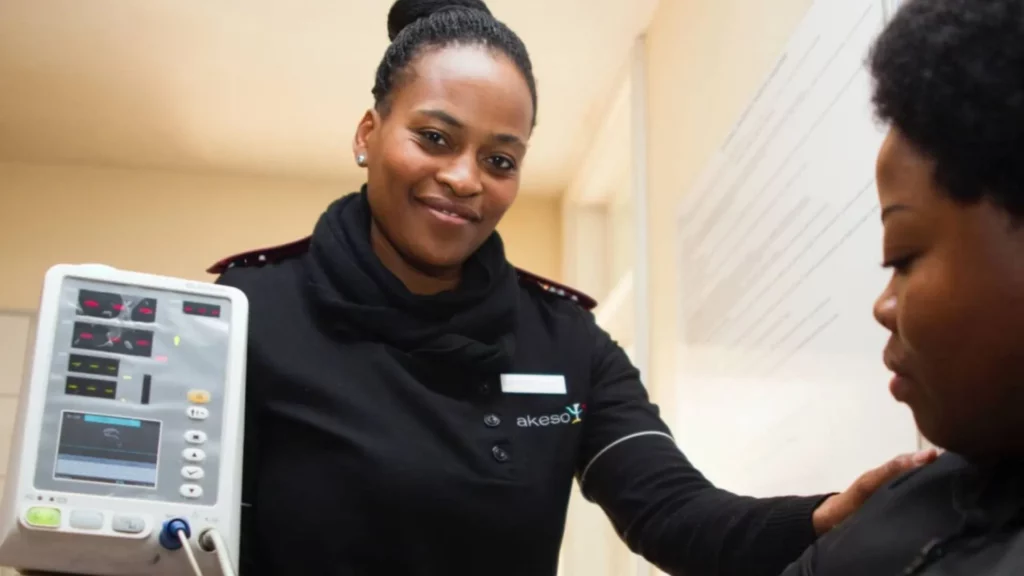The Importance of Patient Satisfaction in Healthcare

Medical centers must deliver satisfactory patient experiences to deliver success for medical, financial and operational success. Here’s why.
Patient satisfaction is commonly used to gauge the quality of healthcare services in practices of all sizes. In recent years, patient satisfaction standards have risen across the board, and the patrons walking through your medical center’s doors now expect a high level of care.
Ensuring that your healthcare organization delivers satisfactory experiences to your patients is essential for medical, financial, and operational success.
An unsatisfied patient is more likely to miss their scheduled appointments, see fewer results from the patient care you’re delivering, or even find another provider. These reactions can mean costly resource downtime at your medical center, inefficient schedules, and uncaptured revenue, all of which hurt your business operations.
Still, getting to the bottom of a medical center’s patient satisfaction is complicated. Let’s start by understanding what patient satisfaction is and what impacts it.
What is patient satisfaction within healthcare?
Within healthcare, patient satisfaction represents how happy patients are with their healthcare, before, during, and after their appointment. Patient satisfaction also measures the quality of care your medical center provides and can give you an understanding of the comprehensive patient experience, including the effectiveness of their care and empathy level.
Additionally, patient satisfaction measures how successful doctors and hospital services are, and if they are able to improve patient outcomes over time.
Patient experience vs. patient satisfaction
Often used interchangeably, patient satisfaction and patient experience aren’t the same.
To assess patient experience, check to see how your patients perceive a key metric of your patient service – like timely communication when scheduling appointments. Did your practice follow up quickly, or was the patient left waiting?
On the other hand, patient satisfaction measures whether or not your medical center met a patient’s expectations about your encounters. For example, two people may receive the same treatment and services but if they have different expectations surrounding care delivery, they will probably give different satisfaction ratings.
Now that we know what patient satisfaction is (and how it’s different from patient experience), let’s dive deeper into why it’s critical for medical centers and your long-term business success.
Importance of patient satisfaction in healthcare
Patient satisfaction directly impacts your business continuity, resource utilization, revenue, and profitability over time. With poor patient satisfaction comes patient no-shows and missed appointments, lower patient retention, and even lead to medical malpractice claims at your medical center — all of which lead to inefficient and often costly restorative efforts at your organization.
On top of that, patient satisfaction has been shown to impact patient clinical outcomes. While research doesn’t indicate that patient satisfaction is the leading indicator of improved clinical outcomes, the findings vary by:
- Medical provider
- Geography
- Patient demographics
- And more
Instead, the most important influence on patient satisfaction is related to the level of patient-centered care provided. This means your medical center should provide care tailored to each individual’s specific health needs, preferences, and values and ensure that the patient values and understands your clinical decisions as to the subject-matter expert. Still, patient satisfaction goes beyond the patient-doctor interactions and care.
Every interaction, from patient scheduling, and insurance verification to check-out and billing, impacts the patient experience.
Five ways your medical center impacts patient satisfaction
Many factors influence patient satisfaction, including demographics, geography, insurance provider, past experiences, and more. Still, there are essential elements to your holistic patient care that can make or break a positive experience.
1. Staff communication and interactions
Before your patients step foot in your medical center, they’ve already interacted with your online portal or contacted representatives to schedule appointments. Make sure that your healthcare contact representatives are empathetic, knowledgeable, and reassuring throughout the interaction.
Research has shown that outside of the actual care provided, empathy and receptiveness significantly impact patient satisfaction. The more personal your care, from scheduling to checking out, the better your patient satisfaction will be.
If you use manual patient scheduling, follow-ups, verification, and onboarding, make sure that your representatives are confident they can represent your practice well. Benchmark and implement important metrics like caller wait time, average handle time, missed or dropped calls, and follow-up work to monitor and analyze your patient interactions.
And once patients are on-site at your medical center, it can be hard to deliver the proper level of attentiveness. Healthcare workers are often rushed or burned out, and being more helpful to patients when healthcare workers may not feel supported by their organizations may feel unjust.
You can combat this by educating your staff on what impacts patient satisfaction, such as the level of eye contact and face-to-face time with their providers. Additionally, ensure that your team feels educated, valued, and prepared to deliver high levels of care.
2. Patient wait time
Wait time goes beyond sitting in the waiting room — it also includes how long patients must wait before their emails and calls are returned, questions are addressed, and medication is pending.
And while you can’t always limit the time spent in the waiting room, you can implement strategic scheduling procedures and staffing optimization to ensure that you’re best utilizing your resources and limiting the impact of patient no-shows on your staff and patients.
Patients should feel that you respect their time, and they may explore other medical providers if they feel that they’re being forgotten.
3. Office environment
More and more medical centers are turning to telehealth and virtual care methods in the wake of COVID-19. Still, medical procedures, check-ups, and testing can’t be done through a computer screen. When patients come to your office or center, make sure that you’re providing a comforting, calm environment with seating, lighting, water, and entertainment.
Additionally, ensure that your staff make eye contact and engage with your patients. A positive physical environment goes a long way in calming your patient’s nerves, bringing them back, and preparing them for the level of care your doctors deliver. While your patients may not remember what you said or did to them, they’ll certainly remember how you made them feel.
4. Patient education
Patients are increasingly computer savvy, and it’s essential to address their predisposed expectations and concerns with patience and compassion.
A National Research Corporation (NRC) survey found that patients listed willingness to explain things as the most crucial element when picking their physicians. Incomplete, incorrect, or inadequate communication with your contact representatives, front desk staff, and doctors can lead to unrealistic expectations that impact satisfaction.
An educated patient is more likely to feel fulfilled and satisfied, thus leading to improved adherence to treatment and a healthcare better outcome.
If you haven’t already, consider implementing patient education best practices like:
- Face-to-face or virtual conversations
- Written information such as handouts, articles, or research tailored for the patient
- Recordings or videos
- Reliable internet sources
Providing these for your patients can help bridge this gap and give them the confidence to be prepared and educated.
5. Transparency
Lack of transparency into cost, time, and outcomes greatly hurts consumer satisfaction levels. And within healthcare, patient satisfaction is no different. According to level payment, receiving the value of medical services is at the heart of patient satisfaction within healthcare systems. Hiding costs from your patients would result in greater dissatisfaction, lower trust levels, and overall poor care perception–even if you delivered outstanding, empathetic, and attentive services.
Historically, employers took care of most of a patient’s healthcare costs which led to a more passive role during healthcare payment. It’s essential for patients who are paying out-of-pocket that they see the value of their receiving care. Still, patients are concerned with co-pays, care outcomes, and timelines, as they’re investing their money and health into your care.
If a patient calls your medical center asking about specific costs and payments with their insurance, ensure that your representatives are prepared and informed to address any concerns or questions.
Improve patient satisfaction at your healthcare center
Provide your patients with the utmost level of care, from their first interactions over the phone to their appointment follow-up and questions.
To improve the patient experience at your medical center, learn how to lower your average handle time (AHT) and implement a strategic scheduling process that mitigates patient no-shows and prevents delayed patient appointments.




